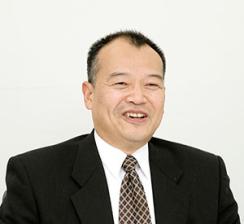Yoshisuke Kiguchi is the CIO of West Japan Machinery (WJM) Pension Fund – which in 2008 was on the cusp of dissolution before he stepped in revitalized the fund. West Japan Machinery Pension Fund is a multi-employer fund benefiting employees of metal and machinery companies in the Okayama/Hyogo/Kyoto area. WJM and Okayama Metal and Machinery Pension Fund merged in October 2019, and assets of the DB plan totaled nearly JPY 20 billion at the end of February 2020. In this interview, Kiguchi talks about the influences on his investment philosophy, and how it helped save the fund.

“We pursue an advanced, diversified investment strategy to achieve a portfolio resembling the endowments at universities like Harvard and Yale. We don’t rely on stocks due to their high volatility. We avoid bonds because of negative interest rates. Instead, we look to alternative investments.”
“We recently made an exception and bought stocks – foreign currencies with a hedge to avoid currency risks – stemming from Covid-19, and in accordance with our stock investment policy of buying on a 7% dip and selling at a 7% rise from previous buying/selling points.”
Learn more about Japan’s funds market.
“We use Aksia for research on alternative investments. Alternative players like Aksia, Albourne, and MCP partner well with Japanese asset managers, but not typically with corporate pension funds. In our case, we don’t require comprehensive consultation – we don’t put assets in equities or bonds, and we can perform ALM [asset/liability management] ourselves, since I’m an actuary. Aksia’s role in our relationship is less about asset management, and more about interpreting and evaluating where management decisions would go at our investment targets. Our independent direct research is also important. For example, with real estate firms, you can gauge the levels of value-up motivation and efforts by knowing how closely they’re managing collateral, if they’re working hard to maintain tenants, provide good upkeep, and so on.”
“Our investment policies are designed to reflect the intentions of our member companies. We conduct polls to gauge the thoughts of our membership, and the results inform our management policies, which aim to establish a framework for continuous and stable diversified investment.”
“I became enthralled by modern portfolio theory in my university days. It got in my blood and seemed to take hold. As a sophomore, I decided to work in long-term stock investment and started to invest in the equity market. My career began at Sumitomo Life, where I managed long-term stock investments. I then moved to Russell Investment where I was in charge of asset management consultation for corporate pensions, and asset liability as an actuary. I enjoyed working at Sumitomo and Russell very much because they allowed me to do whatever I wanted, so long as I continued to deliver results.”
“Around 2000, I started paying attention to alternatives, back when few people took notice of them. Even in the U.S., alternatives were not very popular among institutional investors. I started to recommend them to corporate pensions because I thought stocks were too volatile and dangerous for pension funds to rely on so heavily. At the time, stocks made up 40–55% of employee pension fund portfolios in Japan, and around 60% in their U.S. counterparts. I thought well-balanced alternatives in PEs, real estate, and hedge funds should be included in those portfolios.”
“My father passed away at 45 years old, and I had decided when I reached that age I would step back and spend more time enjoying life. So, in 2008, I became an independent fund manager/consultant. A month after doing so, the global financial crisis hit. One of Russell’s clients, Okayama Metal and Machinery [OMM – now known as West Japan Machinery Pension Fund] faced the difficult possibility of dissolution. Since OMM was based in my hometown, they asked for my help in weathering the crisis. With dissolution already on the table, I was free to try almost anything to keep the fund afloat, and I joined OMM in 2009. Since then, with sound yearly returns based on solid ALM, the fund’s financial position has become quite sound. My goal for this pension fund is to put a structure in place that can maintain a sophisticated, diversified investment.”
“I would like to see Japanese corporate pension funds become more sophisticated. Currently, pension funds in Japan are positioned as general investors, run by directors who are not even required to submit a CV, much less be qualified for alternative investments. I believe corporate pension funds should be registered as qualified investors, which would allow them to act like venture capitalists, as the Japanese government would like.”






